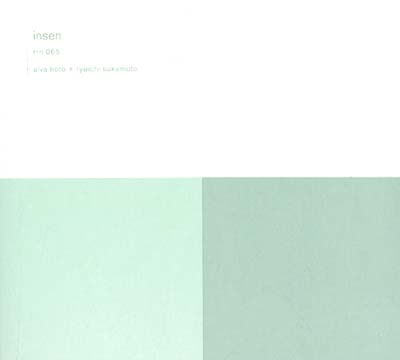

Noto and Sakamoto have even kept the amount of tracks to a bare minimum, but don’t let the modestly lengthed tracklist scare you off this album can offer you much more than any regular sized album or even 3CD compilation. Were others claim to be astute students of the school of minimalism (and fail dismally) “Revep” state with conviction that it is the tutor, teacher and headmaster all rolled into one. Though the show echoed their past collaborations together – such as albums Vrioon and summvs – the improvisational structure, or lack thereof, made clear that this was a show that was one-of-a-kind: its briefness and transience to be experienced once as it is but never to be completely replicated again.If you are a fan of the crowded, element heavy electro that is often passed off as minimal these days then you are not going to like the latest outing from glitch meister Alva Noto and Japanese pianist Ryuichi Sakamoto. The recent release of Sakamoto’s async, filled with his meditations on life, death and mortality, could easily be read into the briefness of the format, too. With the title Two suggesting the focus is on collaboration, the experience at the Barbican was one of seamless synergy between two artists – masters in the experimental field – who knew when to hold back, when to punctuate their dialogue with sound and when to add texture or shade. The closer to their set saw Sakamoto plunge into richer melodies on the keys that climbed towards an effervescing crescendo with a yellow screen behind glowing increasingly brighter. Noto’s bass-heavy beats kicked in for measured heightening, and there were brief moments when Sakamoto ushered in the warmth with major-key piano melodies, providing a respite from the pair’s slightly chillier, though soothing, climate. The steel scrape of piano wires ended on a certain groove just so, rustling plastic was scrunched up close to the microphone and then given pause, the dropping of objects timed for effect. Though this was an unstructured show, each sound felt measured. As the pair lifted the room to a glacial, otherworldly realm over their sonic discourse, people filing through the door peppered the performance with the sound of footsteps. Ghostly drones engulfed the space with a fog that was at once eerie and calming, layered over with Noto’s glitchy beats and Sakamoto’s meandering piano refrains. With a minimalist beginning of scrapes and sounds, the hall felt pregnant with silence, creating a hyper-awareness of rustles and noise from the audience until the ambient loops kicked in.

Though this performance wasn’t as site-specific as, say, Glass which was created using Philip Johnson’s iconic Glass House as an instrument, a dialogue between sound and environment naturally weaved into the pair’s musical conversation. Two illuminated figures against a background of wavering lines and shapes, the live improvisation began Sakamoto’s hair beaming white and Noto’s tailored suit cutting a dark, angular figure on stage. As the pair walked onto the stage, no words were spoken. A live performance of precision and careful balance, the two artists demonstrated their clear mastery of restraint, inhabiting a dichotomous space between tension and calm.

A live recording, Glass, was released this year and a string of improvised shows announced for the Funkhaus, Sónar Barcelona and now, the Barbican.Įntitled Two, the show brought close listening to the cultural centre in the UK capital. At the time, it was intended to be their last studio effort together but after reuniting for the sweeping score to Alejandro González Iñárritu’s film The Revenant in 2015, it became clear the two pioneering artists, together, still had more to say. Ryuichi Sakamoto and Alva Noto released their fifth collaborative album summvs in 2011.


 0 kommentar(er)
0 kommentar(er)
